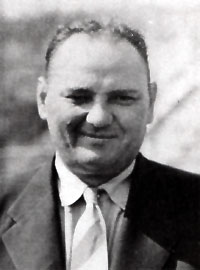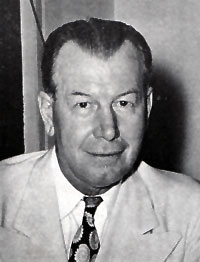THE STEAGLES
The forties proved to be an interesting decade for the Steelers. Having been born the Pirates in 1933 and suffered seven years of mediocrity, Art Rooney decided a change of name with a new beginning for 1940 might turn the team into winners.
The owner’s philosophy was sound, but the team was still ‘the same old Steelers,’ finishing with a 2-7-2 record.
At the end of the season, Lex Thompson, a wealthy financier from New York, made a $160,000 offer for the team. Although this was a huge return on Art Rooney’s initial investment of $2,500 for the franchise in 1933, he knew that Thompson would move the team to Boston.
Mr. Rooney was a Pittsburgh man and appreciated more than anyone what football meant to the fans in the city. He was unwilling to sanction this deal, but came up with another idea.
With his friend Bert Bell, owner of the Philadelphia Eagles, they proposed to join forces and create the Keystoners – a team for all of Pennsylvania. The intention was to play half the games in Pittsburgh and half in Philadelphia.
The league approved the proposal, but the Redskins’ George Marshall led a group of fellow owners to block the move of the Pittsburgh franchise to Boston.
Rather than leave his Pittsburgh without a team, Rooney and Bell traded the Eagles to Thompson for his “Iron Men,” who returned home to Pittsburgh as the Steelers. Bell then became half owner and coach of the team.
The 1941 season saw the Steelers slip to 1-9-1 and change their coach twice. After their first four losses, Bell gave way to Aldo Donelli, who coached both the Steelers and Duquesne University although he was more successful with the latter.
When the losses continued, Art Rooney turned again to Walt Kiesling, who had had coached the team in 1939 and 1940. After rejoining the Steelers during the 1941 season, Kiesling coached the Steelers to their only victory against the Dodgers, 14-7.
As that disastrous season came to a conclusion and with the advent of America’s entry into World War II, pro football was to forced to adapt to the changing times.
Baseball was giving the full backing of President Roosevelt to give the nation some relief from the traumas of war, while football struggled to find enough players to put out on the field.
1942, with Kiesling at the helm, saw the Steelers enjoy their most successful period to date with their first winning season and a 7-4 record for the year.
As football players left for the war, the 1943 season saw teams encounter more and more problems filling their rosters. Teams limits were reduced from 33 to 28 players in an attempt to assist, but with only six players contracted to the Steelers, something drastic needed to be done to keep the franchise going.
With most teams losing money, the league meeting in April that year was a sober affair. Proposals that were approved included unlimited substitutions, abandoning the minimum roster size of 22 and the mandatory wearing of helmets.
There was no relief for the undermanned Steelers until June when the Eagles’ general manager, Harry Thayer, announced the initial suggestion to merger the teams from Philadelphia and Pittsburgh as long as they were known as the Philadelphia Eagles.
At the league meeting a few days later, the idea was approved after Art Rooney and Bert Bell had obtained two minor concessions. The team would simply be called the Eagles, with no reference to a city and they would play most of the games in Philadelphia.
For Steelers’ fans the prickly issue of the uniform colour was lost and the team wore the green Eagles jerseys for all games.
The main challenge for the team would be the concession of having joint coaching by the Steelers’ Walt Kiesling and Philadelphia’s Earle “Greasy” Neale. When it was obvious that it wasn’t working out, Bert Bell compromised and suggested Greasy run the offense while Bell the defense.
Although enjoying a winning season (5-4-1), Art Rooney wasn’t happy with the set-up and the bias towards the other end of Pennsylvania so the merger was disbanded after just the one season.
There is an outstanding book on the Steagles that came out in 2007, written by Matthew Algeo, “Last team Standing.” It is a must for any Steelers’ fan interested in the history of their team.
Dan Rooney’s outstanding book from the same year, “My 75 Years With the Pittsburgh Steelers and the NFL,” also contains good coverage of that period.
Photos and roster from the October 17th 1943 official programme, team photo>>>

